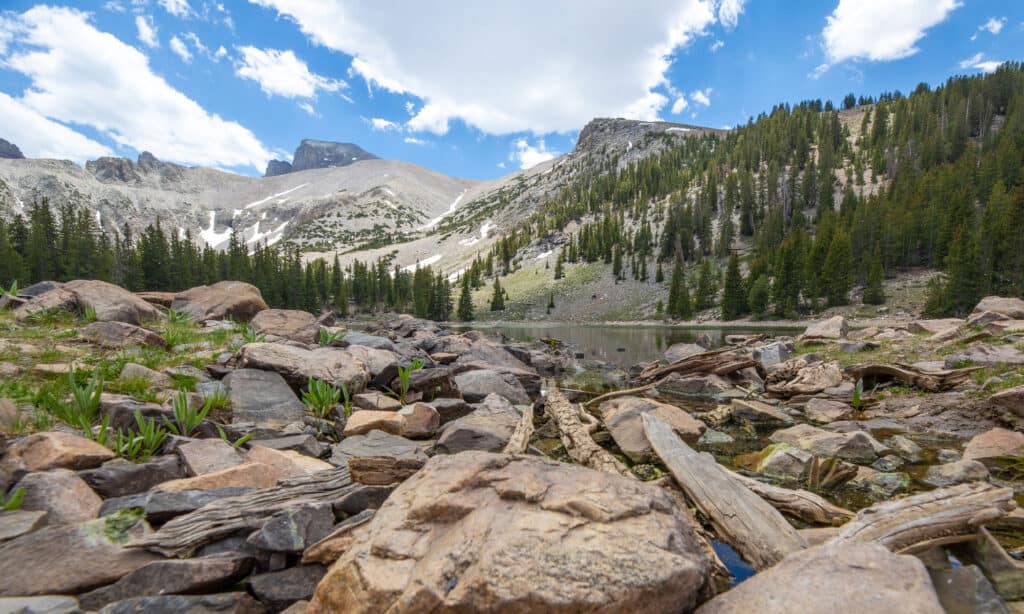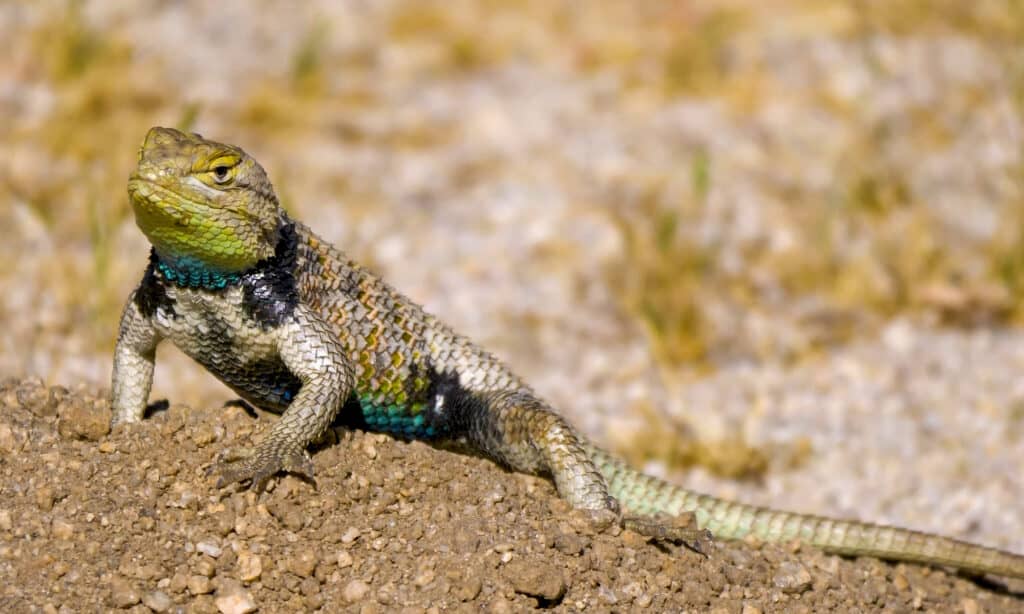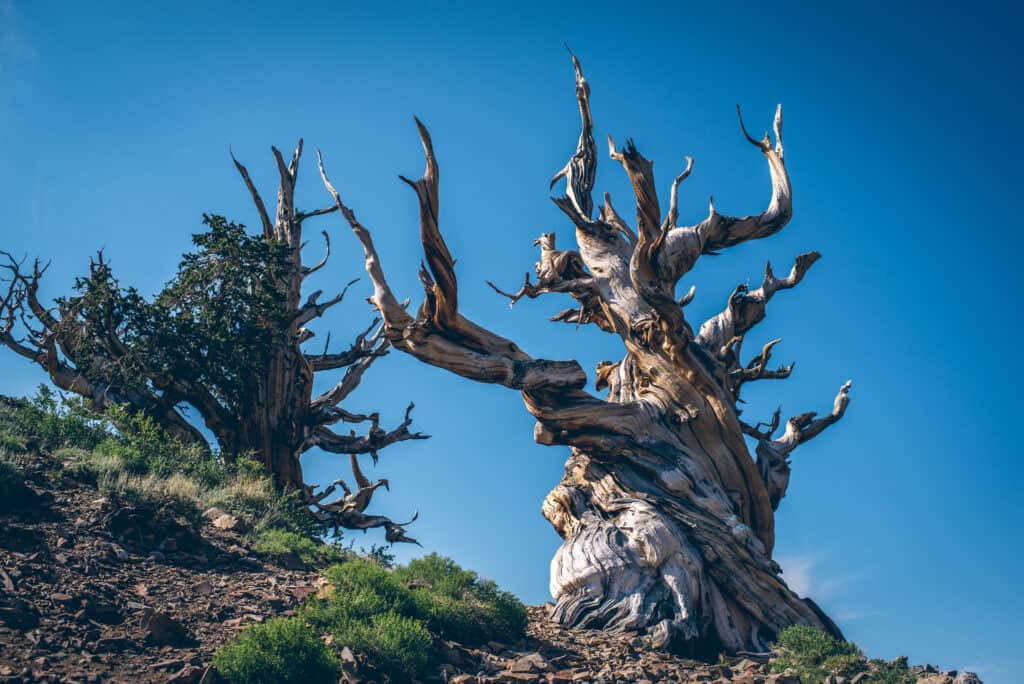Snow is not something you typically associate with a desert climate but it is actually quite common in the Great Basin desert. While annual rainfall and precipitation is low, what does fall often comes as snow. This is especially true in the region’s high mountain peaks. With elevation approaching 10,000 feet above sea level, there is a wide range of temperatures, climates, plants, and animals in the amazing Great Basin desert.
How Large Is the Great Basin Desert?
The Great Basin desert is the largest desert in the United States. It covers around 190,000 square miles. However, its boundaries are not easily defined because it is right next to the Mojave Desert to the south. The other boundaries are easier to identify. The Sierra Nevada mountains are to the West of the Great Basin and form a natural boundary. The Wasatch mountains do the same thing to the east. The Columbia Plateau forms the Northern boundary to the Great Basin desert.
This topography has a big impact on the Great Basin Desert. The Sierra Nevadas create a rain shadow over the Great Basin. Air loses moisture as it moves away from the Pacific coast and rises over the mountain range. When it gets to the Great Basin, the air is very dry. It absorbs moisture from the environment and seldom lets go of precipitation. This creates a desert environment.
Within the desert, the Great Basin National Park covers a lot of the space. It is just over 77,000 acres of diverse landscape with plenty of plants and animals. The National Park is a great place to go stargazing, see pictographs in caves, or hike one of the many scenic trails.

iStock.com/Allen Allnoch
Where is the Great Basin Desert located?
The majority of the Great Basin is in Nevada. The Great Basin National Park is entirely in this rugged state. The desert extends into California, Utah, Oregon, and Idaho. The biggest portions are in Nevada and Utah. Salt Lake City is in the Great Basin on the eastern end in Utah. Reno, Nevada is on the western side of the Great Basin. There are not a lot of cities and towns in between and most of the Great Basin does not have a large population.
There are actually three distinct ways to define the Great Basin area. While they are similar in size, the exact borders vary. The most common way is to determine how and where the water within the region flows. This is called the Hydrographic Great Basin. Within this region, all precipitation either evaporates back into the air, gets absorbed into the ground, or ends up in one of the regions few lakes.
The Great Basin Desert refers to the region characterized by having the same plant and animals species living there. The Great Basin National Park is a small area within this designation. The park preserves the habitat for enjoyment and study of the natural inhabitants. Because there is a great variation in elevation within the Great Basin Desert, there is also a wide range of plant and animals species that call it home.
The final way to look at the Great Basin region is by studying the geologic development that formed the area. The Great Basin and Range extends into parts of Mexico. It includes many mountain ranges, peaks, and valleys.

Swaroop Pixs/Shutterstock.com
What Is the Average Annual Rainfall in the Great Basin Desert?
There is not a lot of precipitation in the Great Basin desert. When it does fall, it is often snow rather than rain, especially at the higher elevations. Within the Great Basin, there is almost 8,000 feet difference between the highest point at Wheeler Peak and the lowest valleys in the area.
Average annual rainfall is between 0.9 and 1.4 inches each year. More rain tends to fall in March, April, and May then again in November and December. The differences from month to month are minimal, however. There is not a distinct rainy season and dry season. Instead, differences between low altitude and high altitude areas are more pronounced. Snowfall picks up in October and continues through April in these areas. Maximum snowfall can be as much as 52 inches in some places, usually occurring in the winter or early spring.
What Are the Hottest, Coldest, and Average Temperatures in the Great Basin Desert?
Temperatures do not get to extremes in the Great Basin desert like they do in some other places. For example, temperatures in the Mojave desert’s Death Valley can get up to 130 degrees Fahrenheit. Temperatures in the Great Basin are closer to the upper 80s during the summer months and low 40s in the cooler winter months. While these are not extremes, colder temperatures can be seen at mountain peaks.
High Temperatures During the Summer
July and August have the highest average temperatures. They average highs of 86 and 83 degrees Fahrenheit respectively. June and September can also be in the mid to upper 80s as the region transitions to and from the summer months. The average low temperatures in July and August are 57 and 56 degrees Fahrenheit. Unlike some deserts, this region does not experience extreme cold temperatures at night in the summer.
Keep in mind that the temperatures at the highest peaks can be different from those in the valleys or the averages for the area. The Wheeler Peak campground is a popular place for outdoor enthusiasts to visit. At almost 10,000 feet above sea level, it can experience cool temperatures during the summer months, especially at night. The temperatures during the winter can be frigid and come with snow. Fortunately, you can check the weather forecast for the campground when planning your trip.
Low Temperatures During the Winter
The winter months see lower temperatures overall in the Great Basin desert. December and January are the coldest months. Average high temperatures during these months are 42 degrees and 41 degrees Fahrenheit. Even during the winter season, temperatures do not often drop below freezing during the day. Low temperatures during the winter can be as low as 18 to 20 degrees Fahrenheit. This means that if it does snow, it tends to stay if the temperature is low enough. The snow often melts during the day, soaking into the ground.

doliux/Shutterstock.com
How Much Rainfall Does It Get?
The Great Basin gets very little rainfall, even compared to other deserts in North America. In one year, the Great Basin typically sees less than one inch of rain during the entire year. It can go months without a thunderstorm or any precipitation at all. When it does get precipitation, it is often from snowfall rather than rain.
At the high peaks, snow can fall during any time of year. Although it is more common and stays around longer during the colder winter months, it is not unusual to see snow-covered peaks during the summer months as well.
Up Next:
- Discover The 10 Largest Animals In Nevada, and Where You’ll Find Them
- The 15 Largest Deserts in the World
- 9 Stunning Desert Lizards
The post Great Basin appeared first on AZ Animals.
from Animal News, Facts, Rankings, and More! - AZ Animals https://ift.tt/DYjRvUJ